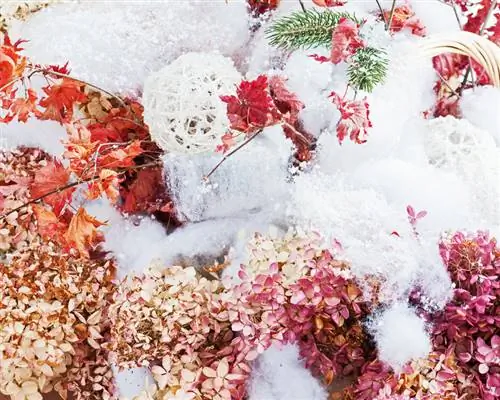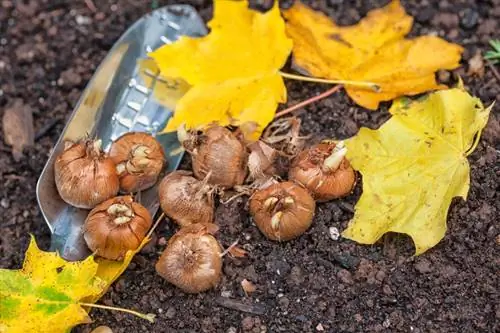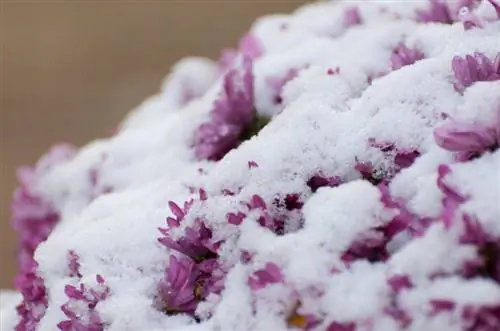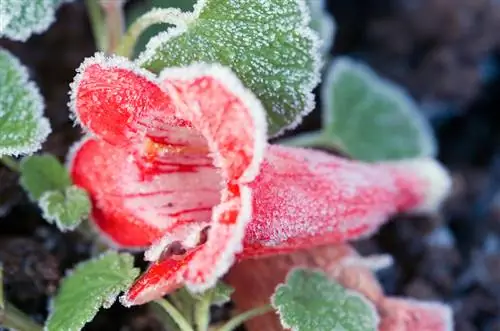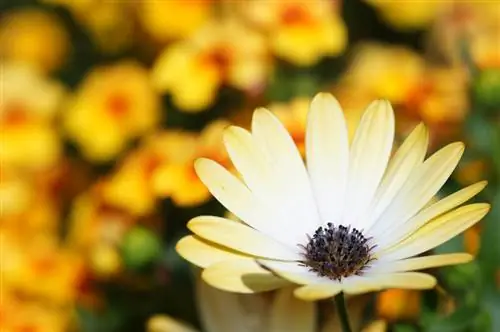- Author admin [email protected].
- Public 2023-12-16 16:46.
- Last modified 2025-01-23 11:20.
Most of the hydrangea species native to our gardens are perennial and very winter-hardy. However, the hydrangea is one of the shrubs that forms its beautiful flower balls in the fall. If there is severe frost damage, the shrub may only produce leaves the following year. It is therefore important to consider a few points when it comes to winter protection.
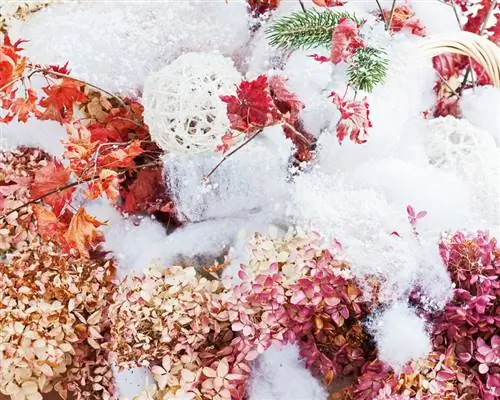
How to protect hydrangeas in winter?
To overwinter hydrangeas successfully, remove spent flowers and dried leaves, cut back smaller bushes and protect them with fleece. Cover the root zone with a 10 cm thick layer of bark mulch, leaves or brushwood.
Preparing for the cold season
First break out all the faded flowers and also use this opportunity to remove dried leaves. If the transition from mild autumn to winter is quite rapid, it may be necessary to strip the remaining leaves of the deciduous varieties from the branches by hand.
Large shrubs are better cut in spring
If you cut back the hydrangea in autumn, it is particularly sensitive and must under no circumstances be exposed to night frosts. You can protect smaller shrubs in the garden from freezing back with a fleece. Large bushes are difficult to cover and should therefore be cut in spring.
Winter protection of the hydrangea
Pranicle hydrangeas and climbing hydrangeas do not require any winter protection beyond these care measures. However, for Hydrangea species that produce their flower buds in autumn, you must take appropriate measures to ensure that the buds do not freeze.
- Hill the root neck of the plant with compost or garden soil.
- Cover the soil around the hydrangea with a layer of bark mulch or leaves about ten centimeters thick.
- Woodbrush is also suitable for soil protection.
- Cover smaller bushes in fleece (€34.00 at Amazon) to protect the buds.
However, avoid using foil and airtight materials. Condensation forms under the film and the shoots inevitably begin to rot.
Tips & Tricks
Do not remove winter protection too early. Even if the sun is already pleasantly warm in spring, it can get so cold at night that the sensitive buds freeze.

